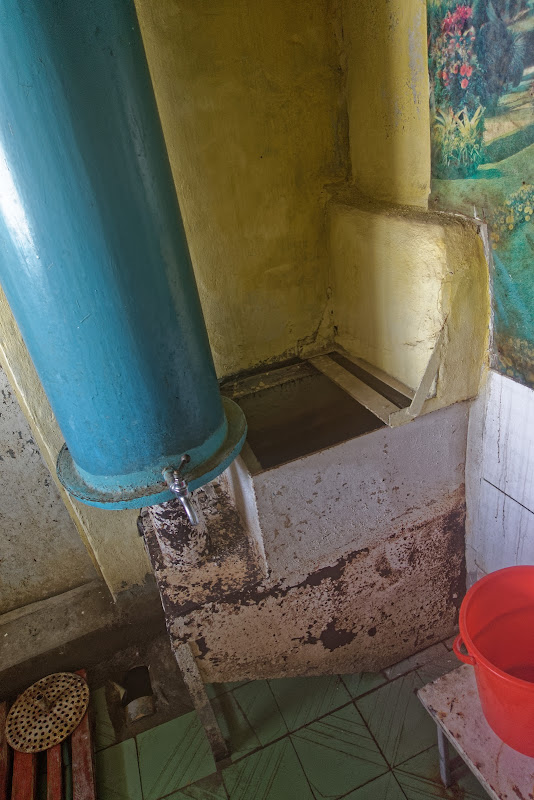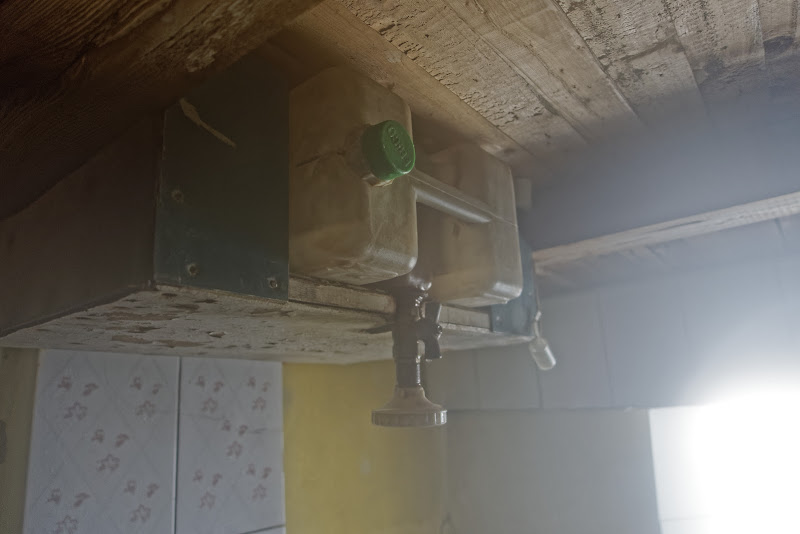Dushanbe to Karakul
We start our trip on the Pamir Highway in Dushanbe hopefully not on Monday (Dushanbe translates "two days after Saturday") but already on Saturday morning. We fly Munich - Istanbul - Dushanbe by Turkish Airlines and do our last preparations like packing our bikes in card boxes, get some cash in US Dollars, watch the last soccer games and drink some decent Bavarian beer.
Сафари хуб - bon voyage - buon viaggio - Gott ferð
Dushanbe
Dushanbe is the capital and largest city of Tajikistan, a landlocked country in Central Asia. The name Dushanbe means "Monday" in Tajik, reflecting the traditional bazaar that took place on this day in the city's early days. Located on the banks of the Varzob River and surrounded by the foothills of the Pamir mountain range, Dushanbe is a vibrant city with a rich history and culture.
The city has a mix of Soviet-era and modern architecture, with tree-lined avenues, parks, and public squares. Dushanbe is home to numerous museums, art galleries, and theaters, showcasing the country's diverse cultural heritage. The National Museum of Tajikistan, for example, houses a vast collection of artifacts and exhibits related to the region's history, from prehistoric times to the present day.
One of the main attractions in Dushanbe is the majestic flagpole, which is one of the tallest in the world. Standing at 165 meters tall, the flagpole is a symbol of the country's independence and pride. Other notable landmarks include the Rudaki Park, which features a statue of the Tajik poet Rudaki, and the Dushanbe Zoo, which houses a wide range of animals from around the world.
In addition to its cultural and historical attractions, Dushanbe is also known for its vibrant food scene, with a variety of restaurants serving traditional Tajik dishes, as well as international cuisine. Visitors can sample local specialties such as plov (rice pilaf with meat and vegetables), shashlik (grilled meat), and laghman (noodle soup).
Despite facing challenges such as poverty and political instability, Dushanbe remains a city of contrasts and charm, with a warm and hospitable population. For travelers interested in exploring Central Asia, Dushanbe offers a fascinating glimpse into the region's culture, history, and traditions.
We arrived in Dushanbe, the capital of Tajikistan at 3.30 without any problem. After getting our bikes ready we left the airport in search for some Somoni and gas for the cooker. At 8am our adventure begins. What the role of this part of Michaels bike is and why it caused us some trouble you will read soon here...

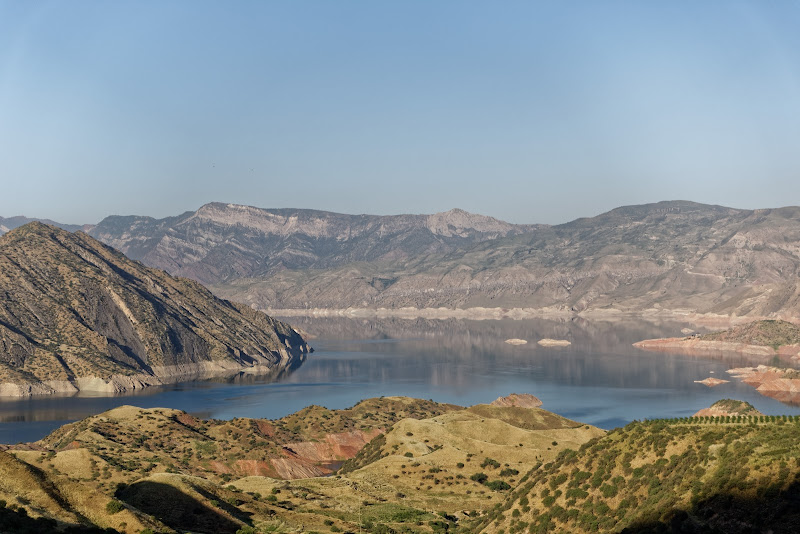
Nurek Reservoir
Nurek Reservoir is a large artificial lake located in Tajikistan, Central Asia. It is created by the Nurek Dam, which is one of the tallest dams in the world, standing at a height of 300 meters (984 feet). The reservoir is fed by the Vakhsh River, and it spans an area of over 70 square kilometers (27 square miles).
The Nurek Reservoir plays a crucial role in the region's hydroelectric power generation and water supply, providing electricity to millions of people in Tajikistan and neighboring countries. It is also a popular tourist attraction, offering stunning views of the surrounding mountains and valleys, and opportunities for water sports such as fishing, boating, and swimming.
The reservoir and dam are located in the picturesque Vakhsh Valley, which is known for its rugged natural beauty and rich cultural heritage. Visitors to the area can explore nearby towns and villages, visit historical sites and museums, and sample local cuisine and hospitality.
After a first night with a stunning view over the nurek lake, Michael's bike fork just didn't want to continue the journey. Since there was no way to repair it, he had to go back to Dushanbe and to get new one. After the repair he tried to catch up with Andi who meanwhile had continued to kulobod and the panj river. On the way there the driver, first went home to get a spare wheel and then after a about 200km just stopped and said 'gas problem', went out to check the engine and continued But finally, after repairing the front rack on the way to the meeting point, Michael could catch up with Andi and we had a very nice place to stay on a plateau over the panj River with direct view to Afghanistan! !Spoiler alarm! Bad roads ahead causing extensive material testing.


Hulbuk fortress
Hulbuk fortress is an ancient site located in southern Tajikistan, in the Khatlon region. It is believed to date back to the 9th century and was once a strategic military stronghold that controlled trade routes and provided protection for the local population.
The fortress is situated on a hill overlooking the Vakhsh River and the surrounding valley, offering panoramic views of the region's rugged terrain and natural beauty. It features a complex system of walls, towers, and defensive structures, including a large gatehouse and several watchtowers.
Hulbuk fortress has a rich and complex history, having been occupied by various rulers and empires over the centuries, including the Samanid, Mongol, and Timurid dynasties. The site has been the subject of numerous archaeological studies and excavations, revealing insights into the region's ancient culture and way of life.

Kulob
Kulob is a city located in southern Tajikistan, in the Khatlon region. It is situated in the foothills of the Pamir Mountains, at an elevation of around 700 meters above sea level. Kulob has a rich history and is known for its cultural heritage, vibrant markets, and picturesque natural surroundings.
The city has been an important trading center for centuries, thanks to its strategic location on the ancient Silk Road. It was once part of the Achaemenid Empire and later became a center of Islamic culture and scholarship. Kulob has also played a role in more recent history, serving as a center of resistance during the Tajik Civil War in the 1990s.
Kulob is home to several important historical and cultural sites, including the 14th-century mausoleum of Mir Sayyid Ali Hamadani, a prominent Islamic scholar and mystic. The city also features several bazaars, including the popular Panjshanbe Bazaar, which sells a wide variety of goods, from local crafts and textiles to fruits, vegetables, and spices.
In addition to its cultural attractions, Kulob is also known for its natural beauty, with nearby mountains, forests, and rivers offering opportunities for hiking, camping, and other outdoor activities. The city is also famous for its pomegranates, which are grown in the surrounding orchards and sold at markets throughout the region.
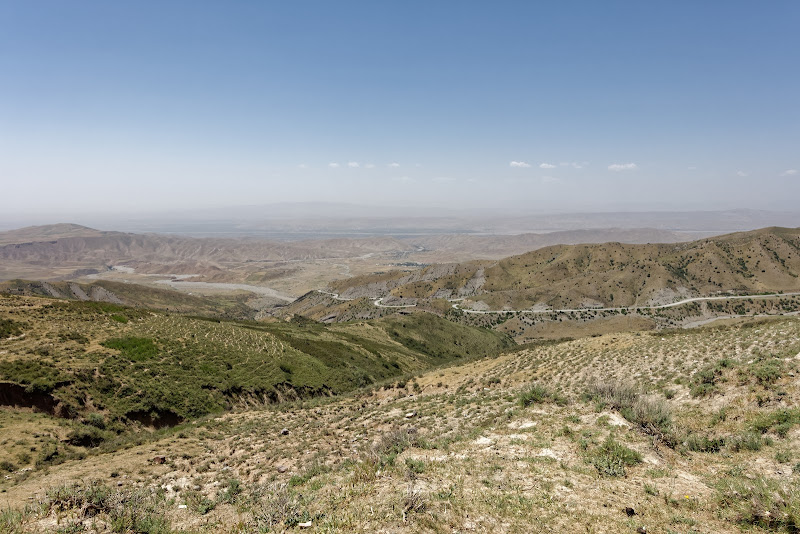




Panj River
The Panj River is a major waterway in Central Asia that flows along the border between Tajikistan and Afghanistan. It is a tributary of the Amu Darya River and plays a crucial role in the region's ecosystem, providing water for agriculture, hydroelectric power generation, and other uses.
The Panj River is approximately 1,125 kilometers long, with a basin area of around 114,000 square kilometers (44,000 square miles). It originates in the Pamir Mountains, near the border with China, and flows southward through Tajikistan before joining the Amu Darya River in Uzbekistan.
The river is known for its scenic beauty, with the surrounding mountains providing a picturesque backdrop to the turquoise waters. The Panj River also serves as a popular destination for outdoor activities, such as rafting, fishing, and hiking.
Along the banks of the river, visitors can explore a rich cultural and historical heritage, including ancient fortresses and settlements dating back to the Silk Road era. The region is home to various ethnic groups, including the Pamiri people, who have preserved their unique culture and traditions despite centuries of outside influence.
The first day in the Panj River Valley just on the border to Afganistan offered amazing views on the surrounding mountains. However, the street conditions didn't allow us to appreciate them how they deserve it. And after the lunch break we realized that another part of Michaels bike just gave up. The back rack just broke! It is still working somehow, but never will survive the more extreme conditions in the high pamir. Luckily we still had the contact to the bike mechanic from Dushanbe and he has already sent the donkey express with a new rack which we can collect tomorrow. After the bikes are repaired and oiled, like we say in German, 'everythings gets fluid'! But that's a story for another time.





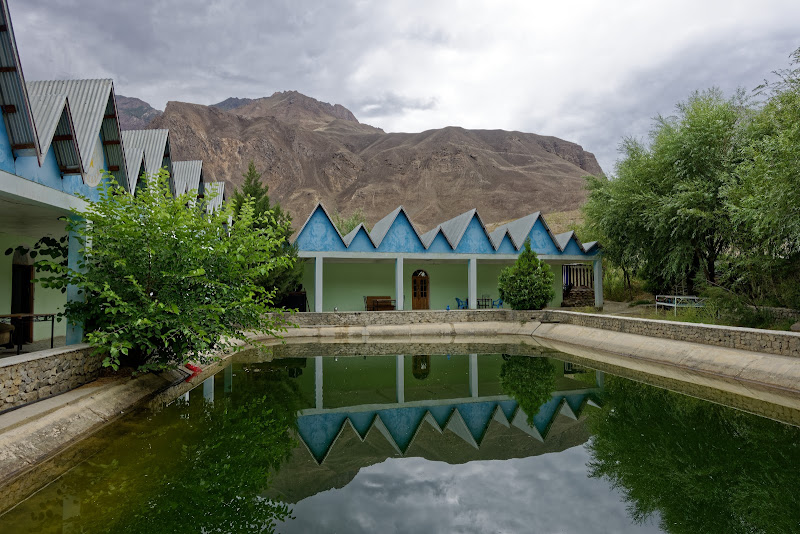
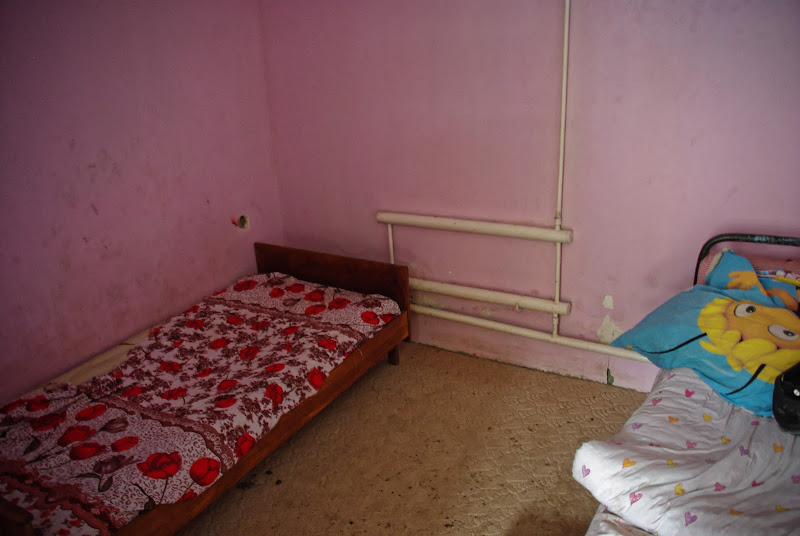
Long time has past since our last contribution and many things happened. We didn't have any serious problems, there was just no internet connection... we finally arrived in the Pamir!
But before that, we still have to complete the story of the last days in the Panj valley. One day we arrived in a place which was called 'roadside restaurant with basic lodging'. Since it was late and we were tired we said, ok, let's stay it's only for one night. There was also a very active boy of maybe 12 years showing us everything and asking us for our dinner wishes. And this is where we did our biggest mistake for the trip... We agreed on having 'gurr gurr', whatever this means. We believe it was chicken... But the next day we started to feel some 'gurr gurr' in our bellies as well. So we are not so sure about the original meaning of the sound... In addition, we got stopped by some tadjik sirens offering us apricots, for which we payed way too much, not only with money. When Andi had them after dinner that day he had to call the 'gurr gurr' a couple of times during the night.
So with stomach and intestine problems our view for the next day was very limited as you can see on the photos. We were really happy with our very welcoming tadjik hosts. After resting a entire day we continue our trip, but the intestine problems follow us all the way into the Pamir....
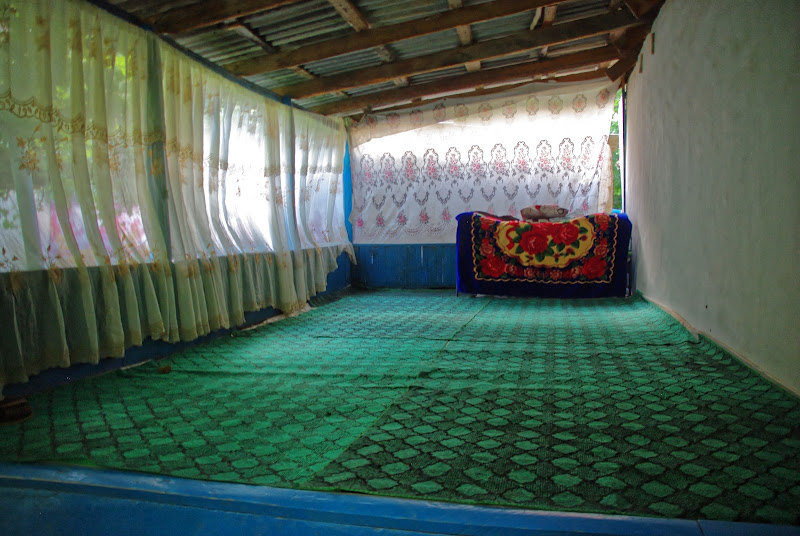




After leaving Rushon, we decided to change the itinerary of our trip and to first go up the valley of the Bartang River. A little bit weakened we thus start the climb to the Pamir plateau in an amazing landscape. Mountains higher than 5000m stand at the side of the almost desert like valley, which only hosts some oasis like small settlings of friendly tadjik people. Their hospitality even seems to increase with every meter we go up the valley. The street conditions gets worse and worse and the climbs steeper and steeper. Since we are not at 100% of our forces anyway, our speed reduces significantly and we are happy about any invitation for tea by the locals.
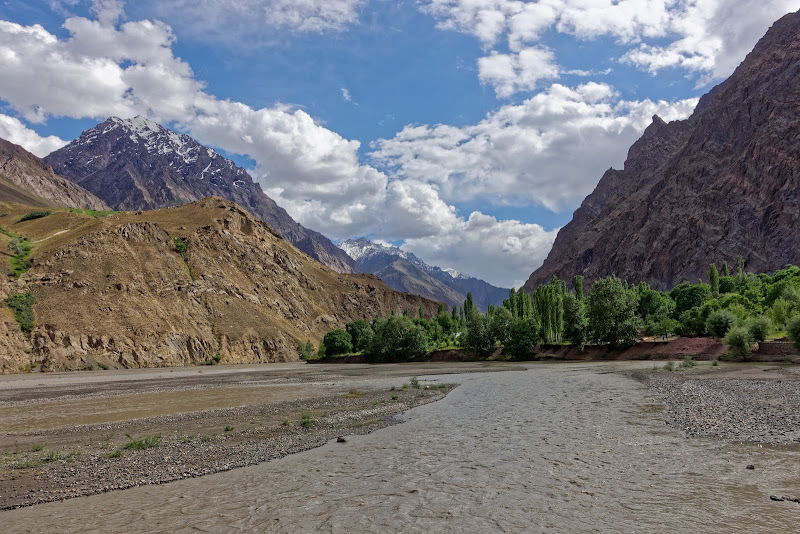


Bartang Valley
The Bartang Valley is a remote and rugged valley located in the eastern Pamir Mountains of Tajikistan. It is known for its stunning natural beauty, unique culture, and challenging roadways that make it a popular destination for adventurous travelers.
The valley is home to several small villages and communities, many of which are inhabited by ethnic Pamiris, who have lived in the region for centuries. These communities have preserved their traditional way of life and cultural practices, including unique forms of music, dance, and handicrafts.
The Bartang Valley is also famous for its challenging roadways, including the infamous Pamir Highway, which winds its way through the mountains and provides access to some of the most remote and beautiful parts of the region. The road is unpaved and requires a skilled driver to navigate, but for those who brave it, the views are truly breathtaking.
In addition to its natural beauty and cultural attractions, the Bartang Valley is home to several historical and archaeological sites, including ancient fortresses, petroglyphs, and other relics of the region's rich and complex history.

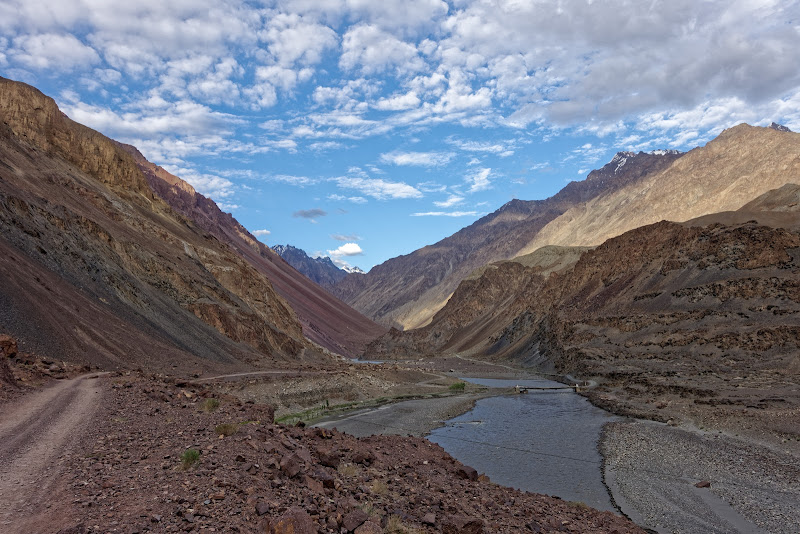






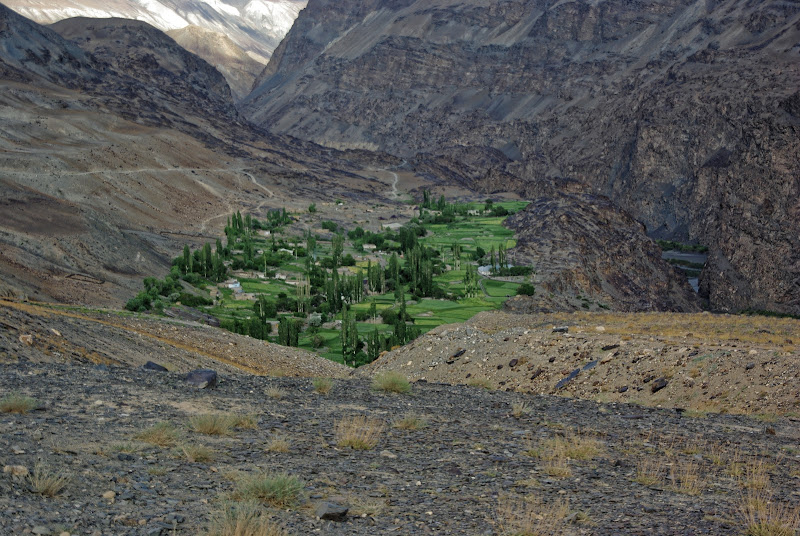
Savnob
Savnob is a small village located in the Bartang Valley of Tajikistan. It is one of several remote communities in the region that are home to the ethnic Pamiri people, who have lived in the Pamir Mountains for centuries and have preserved their unique culture and way of life.
The village of Savnob is situated at an elevation of around 2,800 meters above sea level, surrounded by snow-capped peaks and breathtaking natural beauty. Despite its remote location, Savnob has a rich cultural heritage, with traditional music, dance, and handicrafts still practiced by the local community.
One of the main attractions of Savnob is its proximity to the scenic Bartang River, which flows through the valley and provides a source of water for agriculture and other uses. Visitors can also explore the surrounding mountains, which offer opportunities for hiking, trekking, and other outdoor activities.
The village of Savnob is also known for its traditional architecture, with many of the houses and buildings made from local materials such as mud bricks and wood. The local community is welcoming to visitors, and tourists can experience the hospitality and warmth of Pamiri culture firsthand.


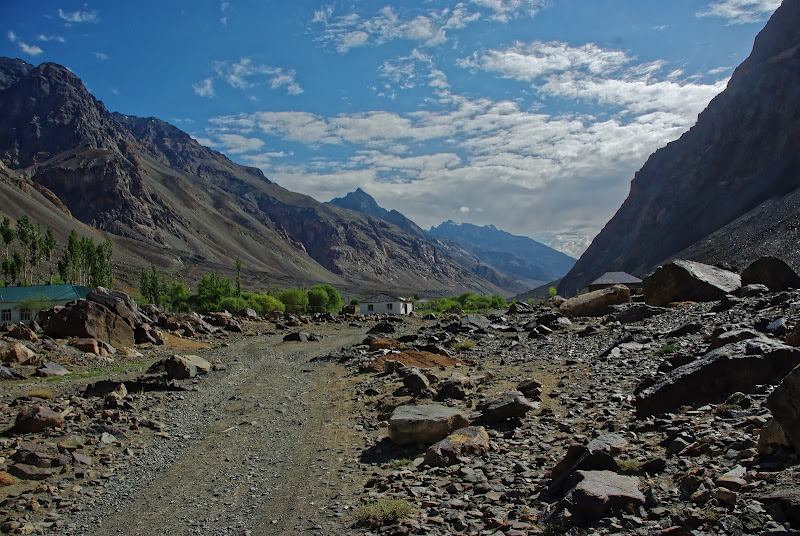



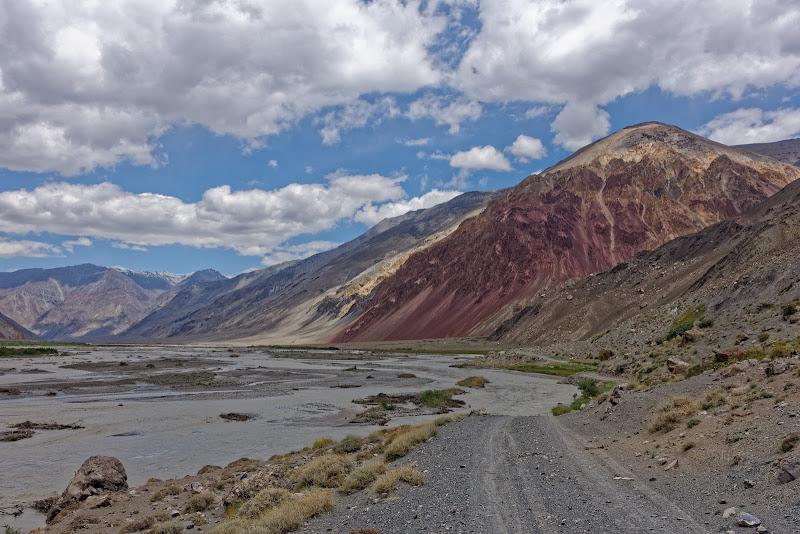












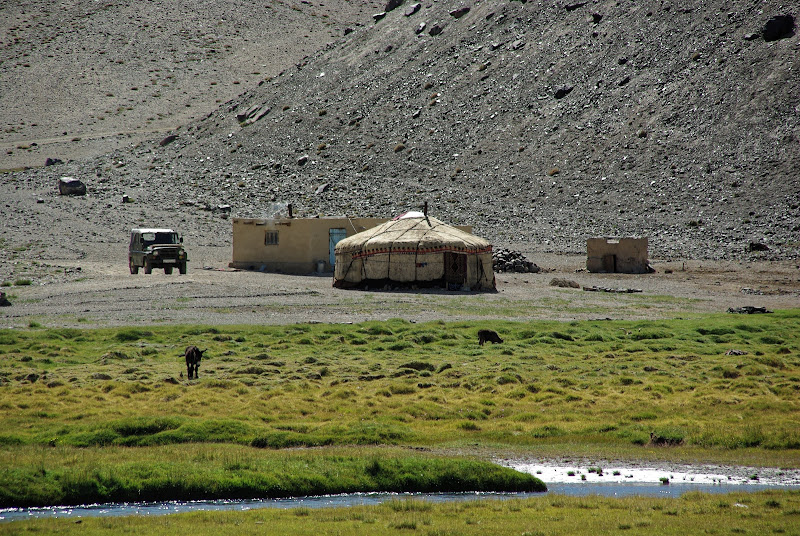

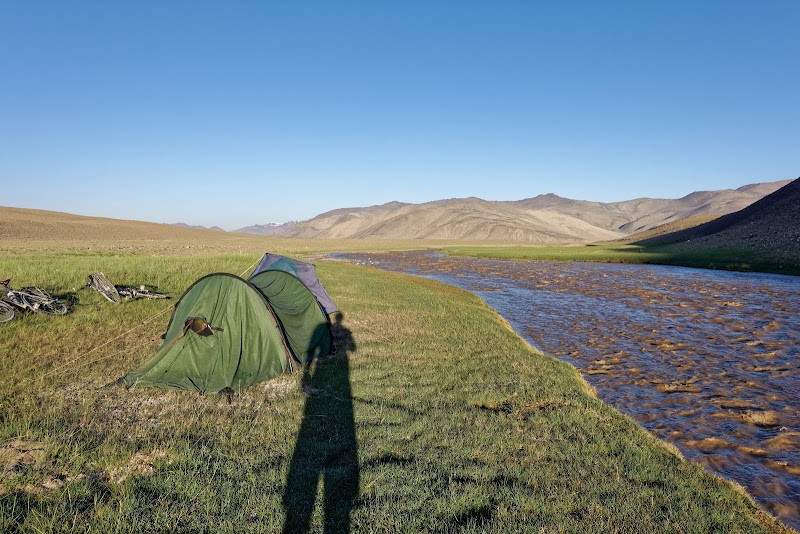


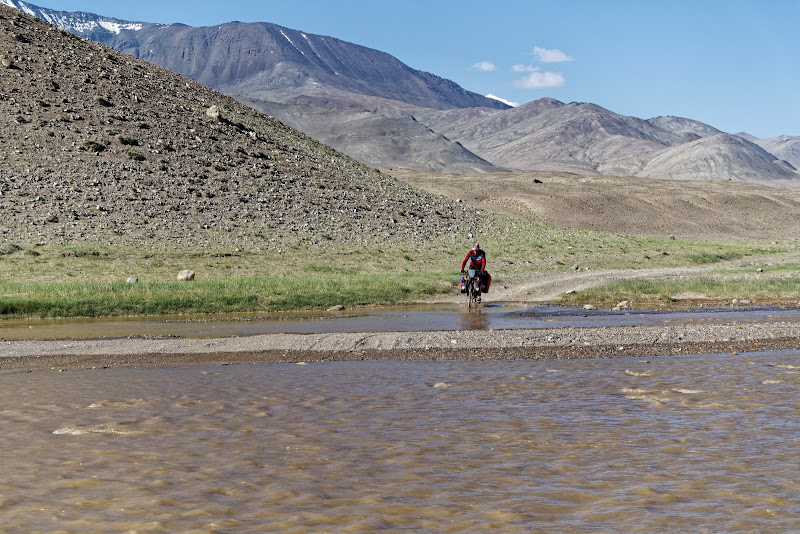







The end of the Bartang Valley brought us a very exhausting climb of about 600 height meters where we had to push our bikes because of the bad street conditions.
But at about 4000m the amazing view excused for all the previous exercise. We finally reached the 'roof of the world'.
At the end of the next day the wind turned and we had our first encounter with the strong head wind in the Pamir. We wanted to reach a lake which was on our maps, but it just was no longer there. So we had to fight the wind for another 10km with a cycling speed of about 5km/h. But we managed to find another water spot and a nice campsite.
We finally reached the turning point of our trip, the Karakul lake! This is an amazing place at 4000m surrounded by much higher mountains. You really can feel how the few people in this place have to struggle in winter times.
BTW, the curse of the 'gurr gurr' continues to follow us all the time....
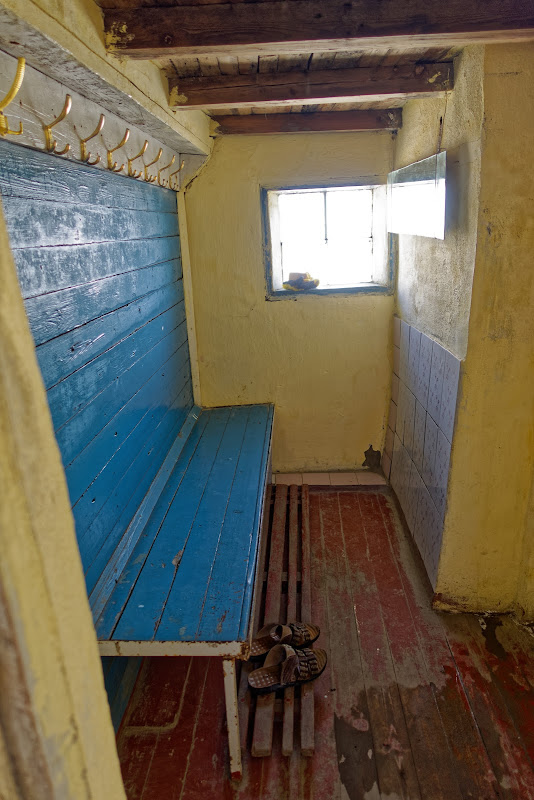

Britney Spears
Britney Spears is an American singer, dancer, and actress who first rose to fame in the late 1990s and early 2000s as a pop music icon. Born on December 2, 1981, in McComb, Mississippi, she grew up in Kentwood, Louisiana, where she began performing in local dance competitions and talent shows. Her breakthrough came in 1998, when she released her debut single, "Baby One More Time," which became a massive hit and launched her into international stardom.
Over the years, Spears has released numerous chart-topping albums and singles, including "Oops!... I Did It Again," "Toxic," and "Womanizer." Her electrifying stage performances, provocative music videos, and daring fashion choices have made her a cultural icon, and she has won numerous awards, including a Grammy Award and multiple MTV Video Music Awards.
Beyond her music career, Spears has also made appearances in films and television shows, including the movie "Crossroads" and the TV show "How I Met Your Mother." However, her personal life has often been the subject of intense media scrutiny, and she has faced numerous challenges and setbacks in recent years. Despite this, Britney Spears remains an enduring and beloved figure in pop culture, and her music continues to inspire and entertain millions of fans around the world.
Why a 20 year old picture of her is displayed in the Karakul shower, I guess the only shower in the village, is a mystery...
